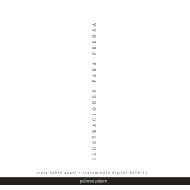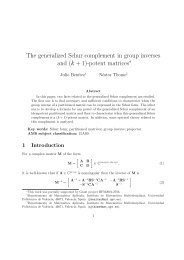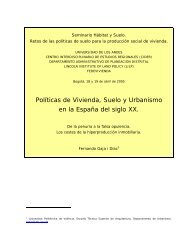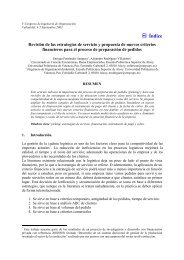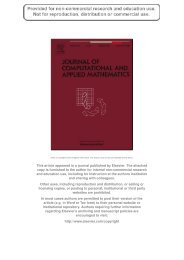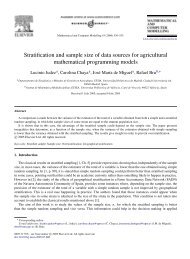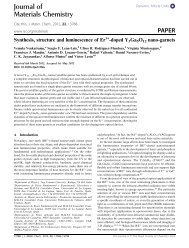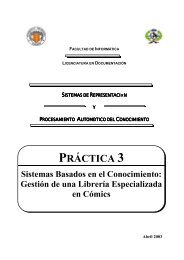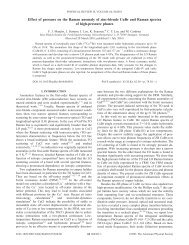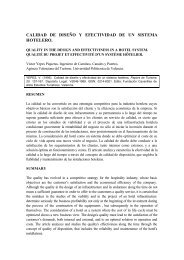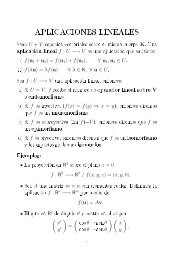Introduction to the resistivity surveying method. The resistivity of ...
Introduction to the resistivity surveying method. The resistivity of ...
Introduction to the resistivity surveying method. The resistivity of ...
You also want an ePaper? Increase the reach of your titles
YUMPU automatically turns print PDFs into web optimized ePapers that Google loves.
15<br />
investigation) used in drawing <strong>the</strong> apparent <strong>resistivity</strong> pseudosection is also shown in Figure<br />
8c. Note that <strong>the</strong> pseudosection plotting point falls in an area with very low sensitivity values.<br />
For <strong>the</strong> dipole-dipole array, <strong>the</strong> regions with <strong>the</strong> high sensitivity values are concentrated<br />
below <strong>the</strong> C1-C2 electrodes pair and below <strong>the</strong> P1-P2 electrodes pair. In effect, <strong>the</strong> dipoledipole<br />
array gives minimal information about <strong>the</strong> <strong>resistivity</strong> <strong>of</strong> <strong>the</strong> region surrounding <strong>the</strong><br />
plotting point, and <strong>the</strong> distribution <strong>of</strong> <strong>the</strong> data points in <strong>the</strong> pseudosection plot does not reflect<br />
<strong>the</strong> subsurface area mapped by <strong>the</strong> apparent <strong>resistivity</strong> measurements. Note that if <strong>the</strong> datum<br />
point is plotted at <strong>the</strong> point <strong>of</strong> intersection <strong>of</strong> <strong>the</strong> two 45° angle lines drawn from <strong>the</strong> centres<br />
<strong>of</strong> <strong>the</strong> two dipoles, it would be located at a depth <strong>of</strong> 2.0 units (compared with 0.96 units given<br />
by <strong>the</strong> median depth <strong>of</strong> investigation <strong>method</strong>) where <strong>the</strong> sensitivity values are almost zero!<br />
Loke and Barker (1996a) used an inversion model where <strong>the</strong> arrangement <strong>of</strong> <strong>the</strong><br />
model blocks directly follows <strong>the</strong> arrangement <strong>of</strong> <strong>the</strong> pseudosection plotting points. This<br />
approach gives satisfac<strong>to</strong>ry results for <strong>the</strong> Wenner and Wenner-Schlumberger arrays where<br />
<strong>the</strong> pseudosection point falls in an area with high sensitivity values (Figures 8a and 8b).<br />
However, it is not suitable for arrays such as <strong>the</strong> dipole-dipole and pole-dipole where <strong>the</strong><br />
pseudosection point falls in an area with very low sensitivity values. <strong>The</strong> RES2DINV<br />
program uses a more sophisticated <strong>method</strong> <strong>to</strong> generate <strong>the</strong> inversion model where <strong>the</strong><br />
arrangement <strong>the</strong> model blocks is not tightly bound <strong>to</strong> <strong>the</strong> pseudosection.<br />
2.5.3 Wenner-Schlumberger array<br />
This is a new hybrid between <strong>the</strong> Wenner and Schlumberger arrays (Pazdirek and<br />
Blaha 1996) arising out <strong>of</strong> relatively recent work with electrical imaging surveys. <strong>The</strong><br />
classical Schlumberger array is one <strong>of</strong> <strong>the</strong> most commonly used array for <strong>resistivity</strong> sounding<br />
surveys. A modified form <strong>of</strong> this array so that it can be used on a system with <strong>the</strong> electrodes<br />
arranged with a constant spacing is shown in Figure 10b. Note that <strong>the</strong> “n” fac<strong>to</strong>r for this<br />
array is <strong>the</strong> ratio <strong>of</strong> <strong>the</strong> distance between <strong>the</strong> C1-P1 (or P2-C2) electrodes <strong>to</strong> <strong>the</strong> spacing<br />
between <strong>the</strong> P1-P2 potential pair. <strong>The</strong> sensitivity pattern for <strong>the</strong> Schlumberger array (Figure<br />
8b) is slightly different from <strong>the</strong> Wenner array with a slight vertical curvature below <strong>the</strong><br />
centre <strong>of</strong> <strong>the</strong> array, and slightly lower sensitivity values in <strong>the</strong> regions between <strong>the</strong> C1 and P1<br />
(and also C2 and P2) electrodes. <strong>The</strong>re is a slightly greater concentration <strong>of</strong> high sensitivity<br />
values below <strong>the</strong> P1-P2 electrodes. This means that this array is moderately sensitive <strong>to</strong> both<br />
horizontal and vertical structures. In areas where both types <strong>of</strong> geological structures are<br />
expected, this array might be a good compromise between <strong>the</strong> Wenner and <strong>the</strong> dipole-dipole<br />
array. <strong>The</strong> median depth <strong>of</strong> investigation for this array is about 10% larger than that for <strong>the</strong><br />
Wenner array for <strong>the</strong> same distance between <strong>the</strong> outer (C1 and C2) electrodes. <strong>The</strong> signal<br />
strength for this array is smaller than that for <strong>the</strong> Wenner array, but it is higher than <strong>the</strong><br />
dipole-dipole array.<br />
Note that <strong>the</strong> Wenner array is a special case <strong>of</strong> this array where <strong>the</strong> “n” fac<strong>to</strong>r is equals<br />
<strong>to</strong> 1. Figures 10c and 10d shows <strong>the</strong> pattern <strong>of</strong> <strong>the</strong> data points in <strong>the</strong> pseudosections for <strong>the</strong><br />
Wenner and Wenner-Schlumberger arrays. <strong>The</strong> Wenner-Schlumberger array has a slightly<br />
better horizontal coverage compared with <strong>the</strong> Wenner array. For <strong>the</strong> Wenner array each<br />
deeper data level has 3 data points less than <strong>the</strong> previous data level, while for <strong>the</strong> Wenner-<br />
Schlumberger array <strong>the</strong>re is a loss <strong>of</strong> 2 data points with each deeper data level. <strong>The</strong> horizontal<br />
data coverage is slightly wider than <strong>the</strong> Wenner array (Figures 10c and 10d), but narrower<br />
than that obtained with <strong>the</strong> dipole-dipole array.<br />
2.5.4 Pole-pole array<br />
This array is not as commonly used as <strong>the</strong> Wenner, dipole-dipole and Schlumberger<br />
arrays. In practice <strong>the</strong> ideal pole-pole array, with only one current and one potential electrode<br />
Copyright (1999-2001) M.H.Loke



